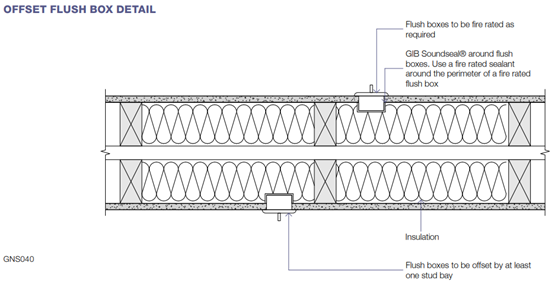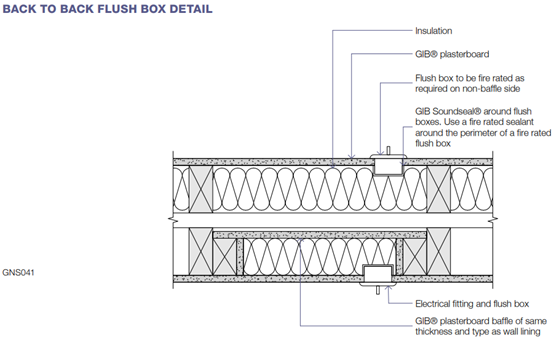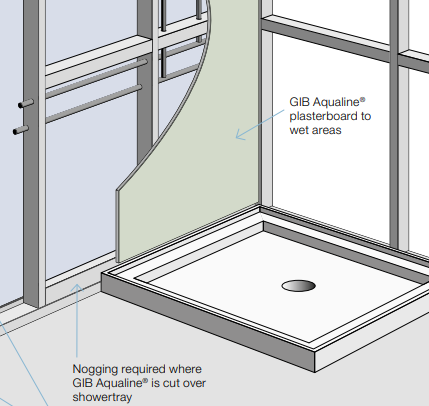Articles | Technical
Choosing the Correct Intertenancy Wall System
Tuesday, 8 April 2025
By Richard Fuller
We receive calls from builders seeking clarification on how intersecting walls, penetrations, tiling over, and bracing among other common situations work with the selected intertenancy wall system, sometimes it is evident the most suitable intertenancy wall system was not specified.
Page 12 of our GIB® Noise Control Systems manual provides useful guidance on things that need consideration when choosing the intertenancy wall system.
GIB® provide three basic types of Intertenancy wall systems.
- Single frame walls where a level of structural isolation from one side to the other is provided by a GIB Rail®, resilient mount or use of the GIB® Rondo® Quiet Stud®.
- Staggered studs or double frames.
- Double frames with central barrier.
Single frame walls are an attractive option as they present the narrowest partition width and are the most cost effective, however come with several limitations which often makes them unsuitable. They typically have minimal noise performance and minor deviations or inaccuracies in construction can result in significant performance drop. GIB® Rondo® Quiet Stud® is less prone to site variations. GIB Rail® and resilient mounts are not designed to take additional loads so this side of the intertenancy wall can’t be used for bracing, tiling over or any other fixtures that would either load the rail/mount or require fixing through to the underlying frame. Where possible all penetrations, flush boxes or plumbing penetration, should be avoided on the rail/resilient mount side as this would create a structural connection between the linings and frame, degrading the noise performance.
Staggered studs or double frames provide a more reliable on-site performance. By utilising additional insulation and/or baffle linings flush boxes can be installed. When a baffle lining is not used these would need to be proprietary fire rated flush boxes.


Our central barrier system, GIB Barrierline®, is our highest performing system for noise control. It allows the installation of plumbing and electrical services in the cavities either side of the central barrier. Up to two penetrations per 600m wide stud bay, 90 x 50mm or 65mm.dia, are permitted without fire stopping, additional or larger penetrations need to be fire stopped. Preformed shower trays can also be butted hard to the frame with additional nogging to allow fixing of the sheet abutting the lip.

The GIB Barrierline® system is designed as a vertical fire separation running from ground floor to roof cladding.
Unless a central barrier system has been specified all plumbing penetrations should be avoided in Intertenancy walls. Also avoid mounting noise emitting fixtures such as TV’s, stereos, laundry and kitchen appliances on intertenancy walls.
Where you have bathrooms back-to-back on intertenancy walls check the functional requirement of NZBC G6 as a STC requirement may no longer apply. The required Fire Resistance Rating will still need to be maintained.
If you have any questions about selecting the correct wall system please call the GIB® Helpline 0800 100 442